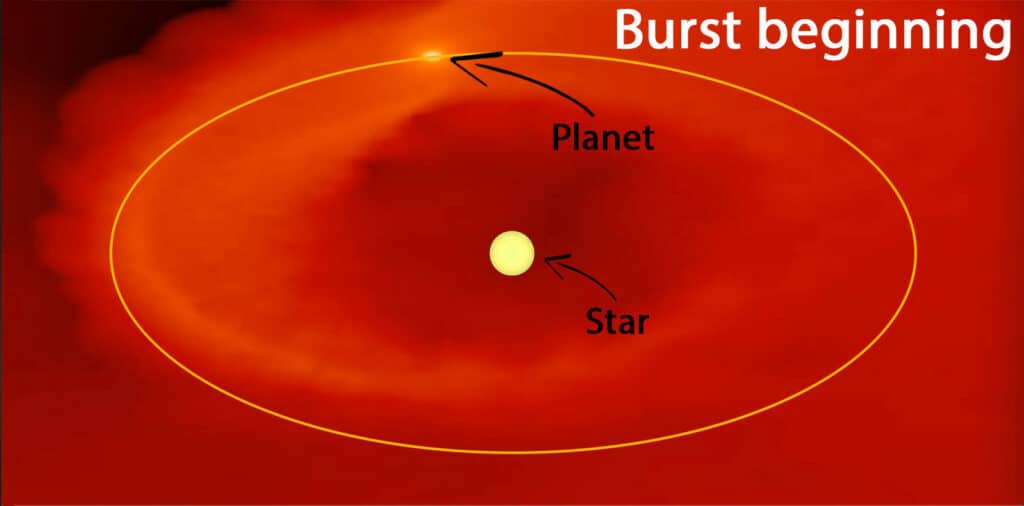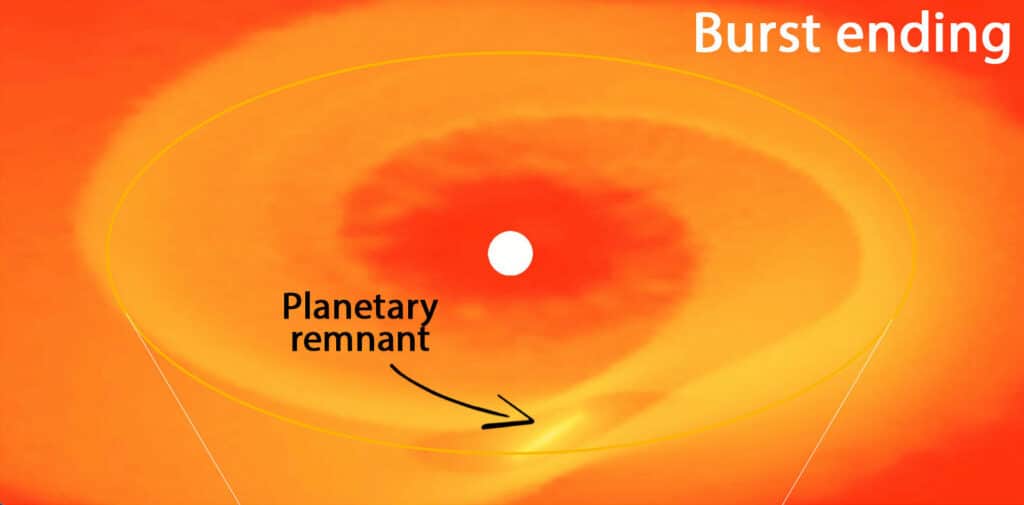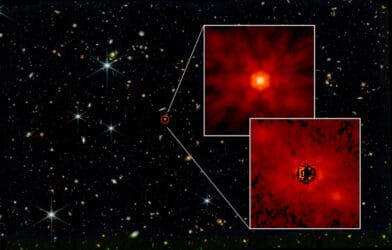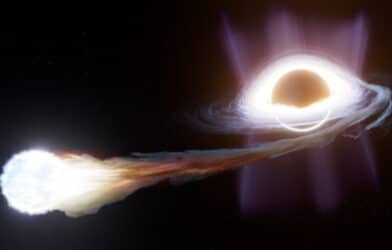A team of scientists believes they have solved the puzzle behind an extraordinarily powerful stellar flare. They propose that a massive young planet is experiencing “extreme evaporation” as it burns up in a superheated environment of swirling raw material around it.
Led by astronomers at the University of Leicester and funded by the UK Science and Technology Facilities Council (STFC), the researchers believe that a planet about ten times larger than Jupiter is being torn apart near a growing star. This inferno flings material off the planet and onto the star, causing the mind-boggling flare. Statistical analysis suggests that similar planet elimination events could occur in up to a dozen developing solar systems.
The team focused their investigation on the protostar FU Ori, situated 1,200 light years away from our solar system. This star experienced a significant increase in brightness 85 years ago, which has not subsided as expected. Astronomers initially attributed the surge in luminosity to more material falling onto the protostar from a protoplanetary disc—a cloud of gas and dust. However, the details remained mysterious.
“Previous observations provided tantalizing hints of a young massive planet orbiting this star very close,” says lead author Professor Sergei Nayakshin in a statement. “Several ideas were put forward on how the planet may have encouraged such a flare, but the details did not work out. We discovered a new process which you might call a ‘disc inferno’ of young planets.”

To shed light on this phenomenon, the Leicester team created a simulation for FU Ori. They modeled a gas giant planet that formed far out in the disc due to gravitational instability, resulting in massive clumps larger than Jupiter but less dense. The simulation reveals the rapid inward migration of this planetary seed toward its host star, drawn by the star’s gravitational pull. As it approaches a distance equivalent to one-tenth of that between Earth and the Sun, the intense heat of the surrounding material ignites the outer layers of the planet’s atmosphere. The planet then becomes a significant source of fresh material, fueling the star and causing it to grow brighter.
“This was the first star observed to undergo this kind of flare. We now have several dozen examples of such flares from other young stars forming in our region of the Galaxy,” notes study co-author Dr. Vardan Elbakyan.

“These nurseries are not quiet places that early solar system researchers imagined them to be; they are instead tremendously violent and chaotic places where many—young planets get burned and literally eaten by their stars,” Nayakshin adds.
The team believes it is crucial to determine whether this scenario applies to other flaring stars as well.
The study is published in the Monthly Notices of the Royal Astronomical Society.












